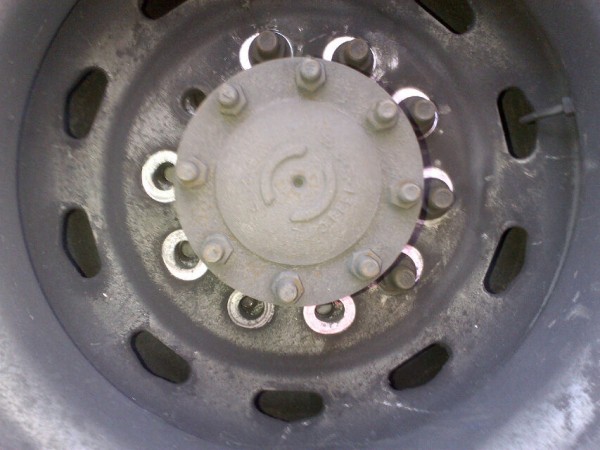Here’s what an imminent wheel separation looks like
TORONTO, Ont. — Two potentially deadly wheel-off incidents were averted over the past week, thanks to attentive MTO transportation enforcement officers working at the scales along the 401 corridor.
Truck News received photos of the wheels, which appeared to be close to becoming completely detached from the vehicle. We learned one of the wheels belonged to a truck that was carrying dangerous goods from the US destined for Montreal.

On one of the trucks, five lug nut bolts were sheared completely off the wheel. The truck was travelling east and witnesses who saw the wheel said it’s unlikely it would have made it across the city of Toronto before the wheel separated.
The sheared-off lug nut bolts should not have escaped the attention of any driver who conducted a thorough, prescribed pre-trip inspection, witnesses said. Drivers are required, under regulation 199/07 of the Highway Traffic Act, to monitor their vehicle throughout the day.
Here are some quick tips I gathered from area maintenance managers on how to prevent wheel separations:
- Monitor your vehicle throughout the course of the day, and ensure the wheel lug nuts and tires are part of that inspection.
- Inspect and ensure (by hand) that each lug nut is secure during every pre- and post-trip inspection. A visual inspection is not enough.
- Conduct post-trip inspections every time you drop a trailer or park a vehicle. Even though post-trip inspections aren’t required by law in Ontario, make it a policy.
- Make sure wheels are re-torqued after 100 miles have been travelled following a wheel replacement.
- Bring trucks and trailers into the shop at regular intervals for comprehensive inspections.
- Train drivers on how to conduct pre- and post-trip inspections. Don’t assume new hires have received proper training elsewhere.
- Fix defects immediately so they’re not left for the next driver to deal with, or result in an on-road service call.
- Conduct internal blitzes. Plant and tag defects and challenge drivers to find them. Reward them when they do.


